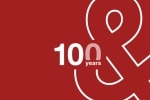Saudi Arabia is transforming its healthcare system. The country’s quest for better outcomes and financial efficiency is behind its move toward prevention and value-based healthcare. As part of this shift, well-designed financial incentives will be critical. We estimate that improved national health outcomes could generate annual savings of SAR 40 to 65 billion per year by 2035 – equivalent to around 10% to 15% of its total healthcare spending. A more effective healthcare system also would create economic opportunities, as better outcomes lead to increased productivity and investment.
Already, Saudi Arabia is implementing important transformational initiatives. Saudi Vision 2030’s Health Sector Transformation Program reshapes the Ministry of Health (MoH) into a pure regulator, appoints the Center for National Health Insurance (CNHI) as the single national payer. The program turns healthcare clusters into Accountable Care Organizations to enhance care delivery. Thus far, Saudi Arabia has managed to keep healthcare costs below that in comparable countries. We estimate that public and private healthcare expenditures in 2025 are SAR 250 billion, representing 6% of national GDP. However, there is upward pressure because of a growing population and increasing incidence of chronic diseases.
A critical part of the overall transformation is CNHI encouraging value-based care through risk-adjusted capitation (RAC) payments. RAC reimburses healthcare providers through fixed per-capita payments adjusted for patient risk levels. Consider a patient with type 2 diabetes. Under a traditional system, early warning signs might go undetected, and proactive disease management would be minimal. By contrast, a value-based approach would focus on proactive management through diet, exercise, medication adherence, and regular check-ins, preventing costly complications and improving long-term health.
RAC is more efficient than previous models that were either block payments (a fixed sum per patient) or fee-for-service (a fixed price for each procedure). Instead, RAC gives providers three financial incentives. RAC encourages investment in primary care, early intervention, and chronic disease management to avoid costly emergency and inpatient treatments. It connects reimbursement to evidence-based treatment, thereby discouraging excessive procedures and hospitalization. Finally, it also promotes better financial planning and cost control by reimbursing based on population health rather than service volume.
RAC savings are likely to be tangible in a number of areas. We estimate that by 2035, financial incentives for preventive care initiatives could generate annual savings of SAR 16 billion to SAR 26 billion, representing 4% to 6% of total healthcare spending. Separately, payment reform could reduce unnecessary medical interventions. Current hospital admission rates are 113 per 1,000 population, above global averages.
By paying only for evidence-based treatment, we estimate that RAC could save SAR 18 billion–SAR 30 billion, or about 4.5% to 7% of total healthcare spending by 2035. An additional saving would come from encouraging hospitals and healthcare clusters to streamline operations, reduce administrative overhead, and adopt technology-driven efficiencies. That would mean annual savings by 2035 of SAR 6 billion to SAR 9 billion, or roughly 1.5% to 2% of total healthcare spending.
By encouraging preventative care, payment reform could reduce the incidence of cardiovascular diseases, which accounts for 28% of all deaths in Saudi Arabia. More broadly, RAC addresses chronic ailments that now account for over 70% of all deaths.i More efficient healthcare spending liberates government resources for investment in education, infrastructure, and other sectors. Encouraging more effective treatments can make Saudi Arabia attractive for foreign investors seeking to enter the medical tourism market.
To implement payment reform, Saudi Arabia should take four key steps.
-
Strengthen regulatory and accountability frameworks
The health regulator should strengthen regulatory frameworks by defining risk-adjusted payment mechanisms, establish accountability structures, and enforce provider performance measures. This includes having clearly defined roles for the MoH, CNHI, and healthcare providers so that financial operations and reimbursement processes are smooth and transparent.
-
Build financial capabilities across stakeholders
Providers need to develop the financial acumen for risk-based contracting. This allows them to estimate patient risk profiles and align budgets with CNHI’s RAC models. Similarly, the regulator and payer should improve actuarial, financial planning, and financial oversight capabilities across the whole healthcare system.
-
Establish a national health data exchange
The system should continue its efforts and realize the creation of its centralized healthcare data exchange, the National Platform for Health and Insurance Exchange Services. The exchange facilitates seamless claims processing, real-time cost tracking, and predictive analytics for patient risk adjustment. To integrate with the data exchange, all providers must adopt electronic health records, AI-driven analytics, and automated financial reporting tools.
-
Introduce RAC through phased implementation
CNHI needs gradual, phased introduction of RAC. It can start with shadow billing and pilot projects. These allow providers to adjust to new financial models, improve operational processes, and mitigate risks.
Successful implementation is crucial to the transformation of Saudi healthcare. With excellence in healthcare at home, the Saudi healthcare industry can attract investment - building a system that makes the population healthier, rewards efficiency and quality, and improves accessibility.
In the news
Saudi Arabia eyes SAR 65 billion annual savings through value-based healthcare shift
A critical part of the overall transformation is CNHI encouraging value-based care through risk-adjusted capitation (RAC) payments.

Contact us

















Menu